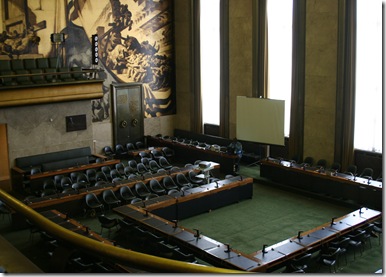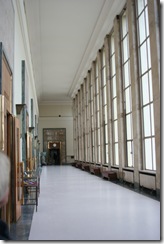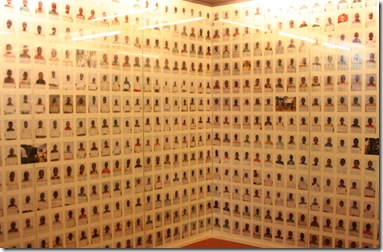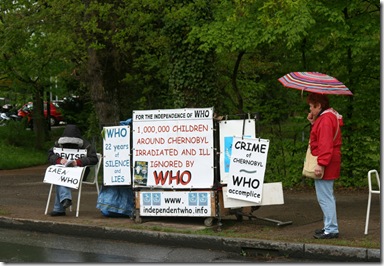After being "tourists" for the past couple of days, we took a more "global" approach to Geneva today. The hotels provide free bus passes so we caught the bus just around the corner from the hotel and it took us right out to the United Nations. On the square across from the UN was an enormous chair with three legs - quite impressive but even more so when we read the plaque beside it. It is called Broken Chair and was commissioned to urge all countries to sign the Mine Ban Treaty and to honour their commitments to help land mine victims and clear land mine areas.
Seeing the flags of the 191 member countries of the UN was a thrill! The League of Nations was formed here and became the United Nations in 1945. 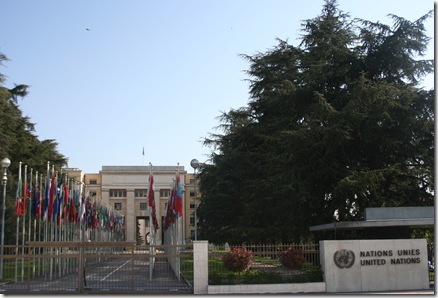
We were let through the gates at 10 for the 10:30 tour. The pre-tour screening involved putting our bags through security screening then presenting passports for approval. Mine seemed to be under quite a bit of scrutiny - the guard would frown at the computer screen then type some more, click a few buttons, frown again then take a deep breath!! Finally, he tilted a webcam towards me and took my photo! I got a visitor's tag with my photo on it and was told it included Mom and Dad - they had to stay with me at all times!!!
The tour was very interesting - especially when mixed with the myriad of languages swirling around us as we passed diplomats and delegates dealing with world issues! We were into a couple of the conference rooms and could easily imagine human rights or some other major issue being discussed.
The buildings are all on a grand scale and can make one feel quite insignificant!
Tourists were not allowed into the grounds or gardens but the views from the huge windows were spectacular! Two statues dominated the back garden. 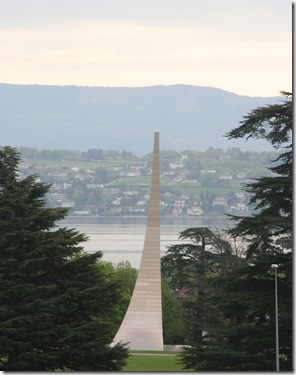 This statue was a gift from Russia to commemorate the conquest of space.
This statue was a gift from Russia to commemorate the conquest of space.
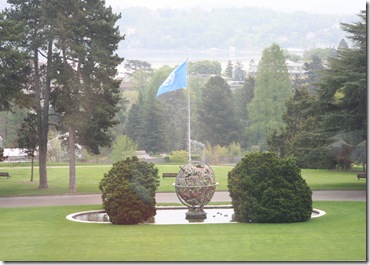 The bronze globe by the flag was donated to the League of Nations by Woodrow Wilson.
The bronze globe by the flag was donated to the League of Nations by Woodrow Wilson.
Across the street from the UN is the headquarters for the International Red Cross and a museum chronicling the works of the Red Cross from its inception. At the entrance is a compelling group of stone statues, blindfolded and with their hands bound, symbolizing the violation of human rights. 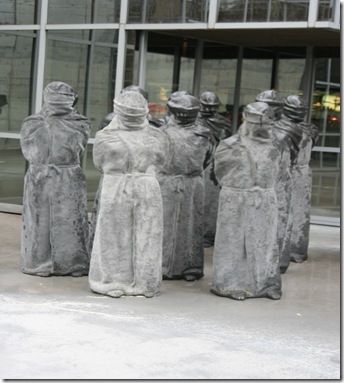
The museum begins with the story of Henri Dunant's experiences at the Battle of Solferino in 1859 that compelled him to set up an organization to help wounded soldiers. We moved through the museum to slide shows, recordings and images from various events where the Red Cross was instrumental. Glass shelves holding boxes with registry cards for 7000 prisoners of war during World War I was quite an impressive sight. 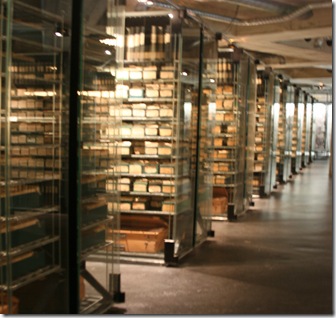 A small cell had been recreated elsewhere to represent a cell where the Red Cross had found 17 political prisoners. 37 footprints in the concrete made a clear statement of the living conditions.
A small cell had been recreated elsewhere to represent a cell where the Red Cross had found 17 political prisoners. 37 footprints in the concrete made a clear statement of the living conditions. 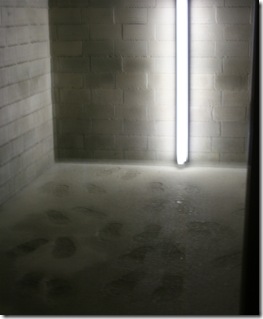 Another small room was covered on three of the four walls with photographs of children displaced by the genocide in Rwanda. Thinking of the children in my world and seeing these faces looking out at me was quite moving.
Another small room was covered on three of the four walls with photographs of children displaced by the genocide in Rwanda. Thinking of the children in my world and seeing these faces looking out at me was quite moving.
A separate temporary exhibit was being displayed in another part of the building. It was called In-Security and documents, through photographs, the dilemma of nuclear energy.
Heartwrenching photographs from the aftermath of Hiroshima - a child's jacket, a lunch box, part of a pair of glasses...and the story of the person who owned them. None of them survived and these were the only items recovered - not even a body in many cases.
Chernobyl photographs showed sweet faced children with birth defects and towns becoming deserted as a result of the disaster. Several pastoral scenes became eerie when one read the plaque describing the radioactive farmland or nuclear waste buried in the riverbeds. Very moving and thought provoking...
When we arrived at the UN in the morning, there were two men on the corner with a display marking the 22nd anniversary of Chernobyl and a map of all the nuclear sites world wide.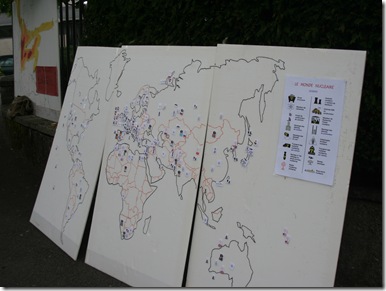 Protesters have been outside the World Health Organization every day for the past year protesting WHO's agreement with the International Atomic Energy Association to not publish any of their findings from the research they have done on nuclear "incidents" like Chernobyl. Our resident activist (aka Mom) was quite moved by the whole day.
Protesters have been outside the World Health Organization every day for the past year protesting WHO's agreement with the International Atomic Energy Association to not publish any of their findings from the research they have done on nuclear "incidents" like Chernobyl. Our resident activist (aka Mom) was quite moved by the whole day.

